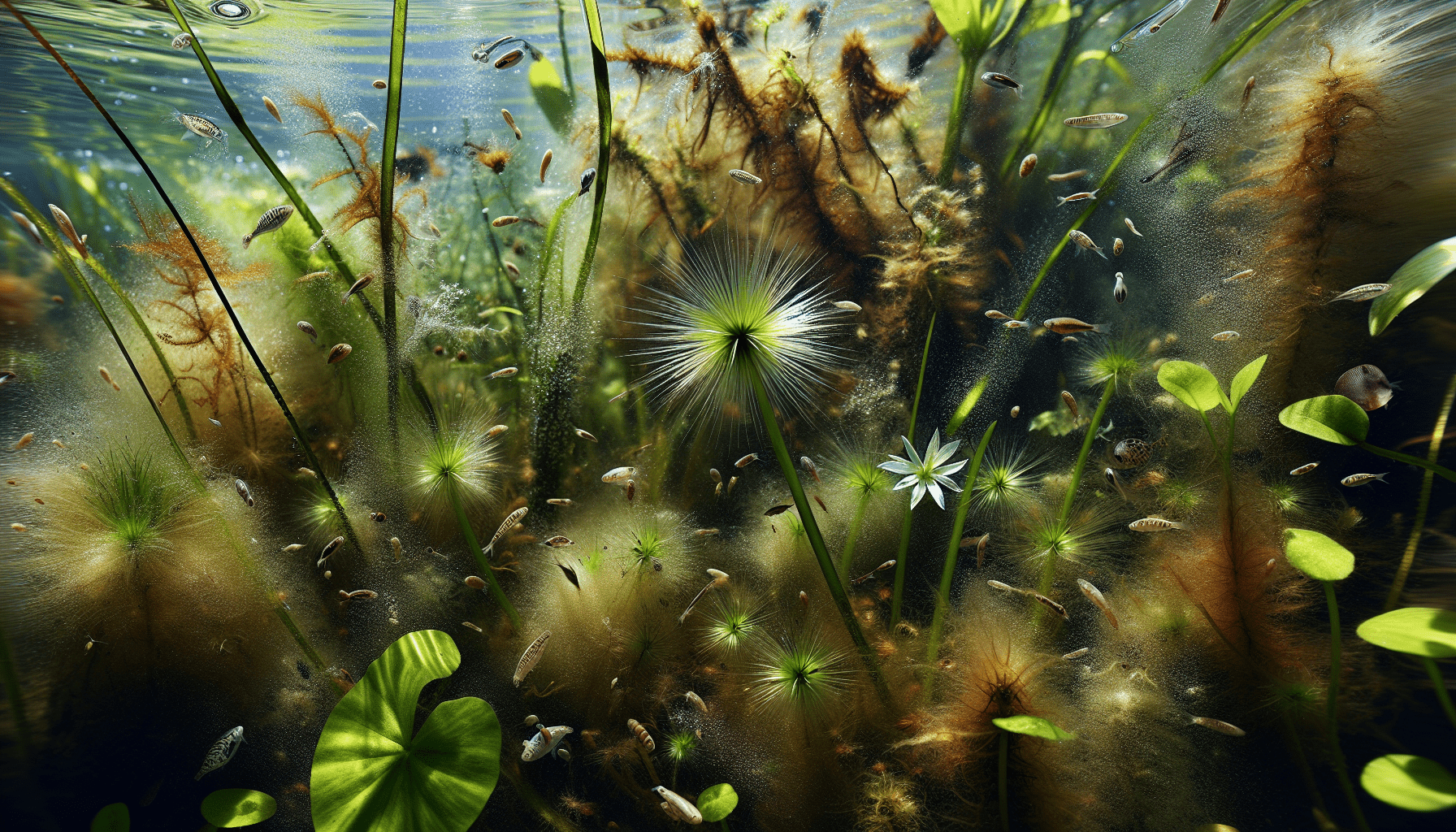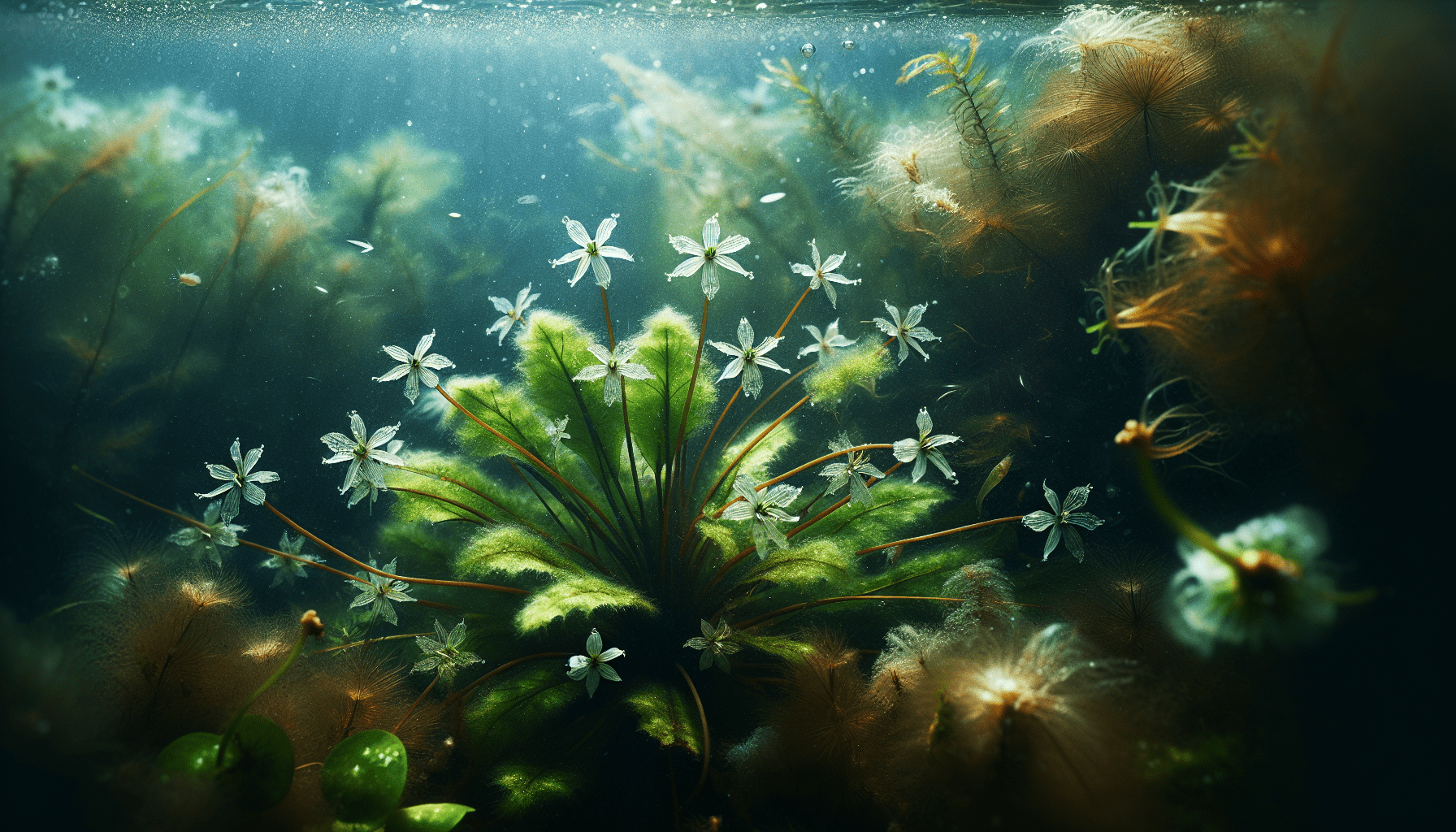You stand at the edge of a sunlit pool, observing the floating green mass of an aquatic plant, known scientifically as Callitriche palustris, commonly referred to as water starwort. Curiosity piques as you wonder about its ecology, habituation, and characteristics that enable it to thrive in such a unique environment. Nestled between the pages of this article, you will find detailed information about Callitriche palustris, its nature, its environmental interactions, and the role it plays in the aquatic ecosystem. Unearth the fascinating mysteries of this aquatic weed and discover how its existence illustrates the richness and variety of life beneath the water’s surface.

Overview of Callitriche Palustris
Callitriche Palustris, an aquatic and semiaquatic plant often termed as ‘water-starwort,’ merits academic consideration for its biological roles, distribution pattern, and links to human culture. This article will provide a comprehensive understanding of Callitriche Palustris, highlighting its physical attributes, habitat preferences, growth and life cycle, ecological roles, and historical significance.
Taxonomic classification of Callitriche Palustris
Part of the taxonomic group Plantae, Callitriche Palustris belongs to the Callitrichaceae family, indicating shared characteristics with other water-starworts. Its genus, Callitriche, groups it among a collection of waterborne plants linked by shared physical traits and habitat preferences.
Etymology and common names of Callitriche Palustris
The Latin species name ‘Palustris’ translates to ‘of the marsh,’ depicting its inclination towards aquatic or damp environments. Known colloquially as marsh water-starwort or simply water-starwort, these common names serve as a testament to the plant’s presence both in water and land.
Physical Characteristics of Callitriche Palustris
Description of plant structure
Callitriche Palustris is a herbaceous plant characterized by its short-lived perennial nature. It presents a thin and fibrous root system, allowing for firm anchoring within its preferred habitats. Its erect stem ranges from 10 to 30cm in height.
Details about leaves and stem
This water-starwort presents two distinct leaf types, submerged and aerial. Underwater, the leaves are lengthy and narrow, whereas the surface leaves are broader and relatively shorter, forming star-like rosettes around the stem.
Understanding its flowers and seeds
The plant’s discordant flowering behavior is a spectacle. The flowers, inconspicuous and relatively small, emerge directly from the leaf axils, and carry superior fruit, green and ovoid, that encompasses multiple seeds.
Habitat and Distribution of Callitriche Palustris
Native habitat and geographical spread
Callitriche Palustris, native to Europe, has since seen a widespread geographical distribution. Its adaptability allows it to flourish in North America, Asia, and parts of Africa and Australia.
Range and tolerance of environmental conditions
Favoring a wide range of temperatures and light levels, the plant shows an impressive level of tolerance. It thrives in different soil types, preferring moist to wet conditions due to its palustrine nature.
Its preference for freshwater bodies
Callitriche Palustris showcases a marked preference for freshwater bodies. It is commonly located in freshwater streams, ponds, and even ditches, testifying to its adaptability.
Growth and Life Cycle of Callitriche Palustris
Typical growth patterns
Given the proper conditions, Callitriche Palustris can proliferate abundantly, sometimes enough to form dense mats over water surfaces. Additionally, it often adopts a creeping growth pattern, especially on terrestrial terrains.
Maturation and reproductive methods
The plant’s reproductive strategy involves both vegetative reproduction and seed production. During spring and summer, the plant’s vigorous vegetative growth gives rise to new plants while the autumn season witnesses significant seed production.
Seasonal changes and plant lifecycle
Seasonality plays a crucial role in the life cycle of Callitriche Palustris. Its flowers bloom during spring and summer, seeding in autumn, and achieving dormancy during winter months.

Ecological Role of Callitriche Palustris
Its function in the aquatic ecosystem
The plant provides habitat for numerous aquatic organisms including insects, crustaceans, and small fishes. Additionally, through oxygenation processes, it improves water quality, benefitting the aquafuana.
Interactions with aquatic fauna
Callitriche Palustris also serves as food for many herbivorous aquatic organisms. The interactions between the plant and the aquatic fauna can steer the functioning and vitality of aquatic ecosystems.
Role in nutrient cycling
As a contributor in nutrient cycles, Callitriche Palustris plays a significant role in maintaining the balance in aquatic ecosystems. The decay of its leaf and stem materials releases nutrients back into the water column.
Cultural Significance of Callitriche Palustris
Historical uses in human society
Historically, Callitriche Palustris has seen usage as a salad green due to its high nutritive content. Availability in many regions has made it a popular choice among foragers.
Cultural symbolism, if any
While Callitriche Palustris doesn’t carry direct cultural symbolism, plants within its family have often been linked to purity and clarity due to their aquatic inclinations.
Its role in traditional medicine
Parts of Callitriche Palustris have been used in traditional medicine for various ailments, illustrating that its relevance extends beyond ecology and into human health.
Challenges of Callitriche Palustris Proliferation
Potential for overgrowth and problems caused
While beneficial in controlled numbers, excessive proliferation of Callitriche Palustris can lead to problems. Dense growth can obstruct water flow, impacting the aquatic ecosystem and impairing human water usage.
Impact on human activities
Overgrowth of water-starwort can hamper recreational activities like fishing and boating. Furthermore, these mats can impede infrastructural projects linked to bodies of water.
Issues for other aquatic plants and animals
An unchecked proliferation of Callitriche Palustris can lead to competition for resources with other aquatic plant species. Dense mats can also reduce light penetration, affecting underwater life.
Management and Control of Callitriche Palustris
Mechanical, chemical and biological control methods
Control most often involves mechanical removal, but this must be done with care to prevent spreading. Chemical control, while effective, requires careful consideration due to potential environmental impacts. Biological control is another avenue that is being explored.
Policy and legal measures for control
Navigating the legal frameworks is important for the control of Callitriche Palustris. Policies vary based on geographical location, and as such, regional guidelines must be adhered to.
Prevention strategies and early detection
Regular monitoring of bodies of water can aid in the early detection and subsequent management of Callitriche Palustris. In addition, awareness initiatives can be instrumental in preventing its unintentional introduction.
Research and Future Prospects of Callitriche Palustris
Current scientific research
The inherent biological properties, potential uses and environmental interactions of Callitriche Palustris are areas of interest in contemporary research. Studies aimed at sustainable control measures are also in progress.
Potential uses and benefits
Research has indicated potential uses of Callitriche Palustris within waste water treatment, due to its ability to remove pollutants and heavy metals from the water column.
Future predictions for the plant
As climate change continues to change the global landscape, the future distribution and population dynamics of Callitriche Palustris remain uncertain.
Conservation and Sustainability of Callitriche Palustris
Threats to the species
Habitat degradation, pollution and certain aspects of climate change are major threats to Callitriche Palustris.
Conservation efforts
Efforts towards the conservation of Callitriche Palustris involve focused habitat protection, sustainable management and propagation for re-establishment in suitable environments.
Strategies for sustainable management
Combining the knowledge of the plant’s ecology with techniques for minimally invasive management constitutes sustainable strategies for Callitriche Palustris. Regular monitoring, mitigation measures and the inclusion of local communities are vital for a long-term approach to the plant’s management.